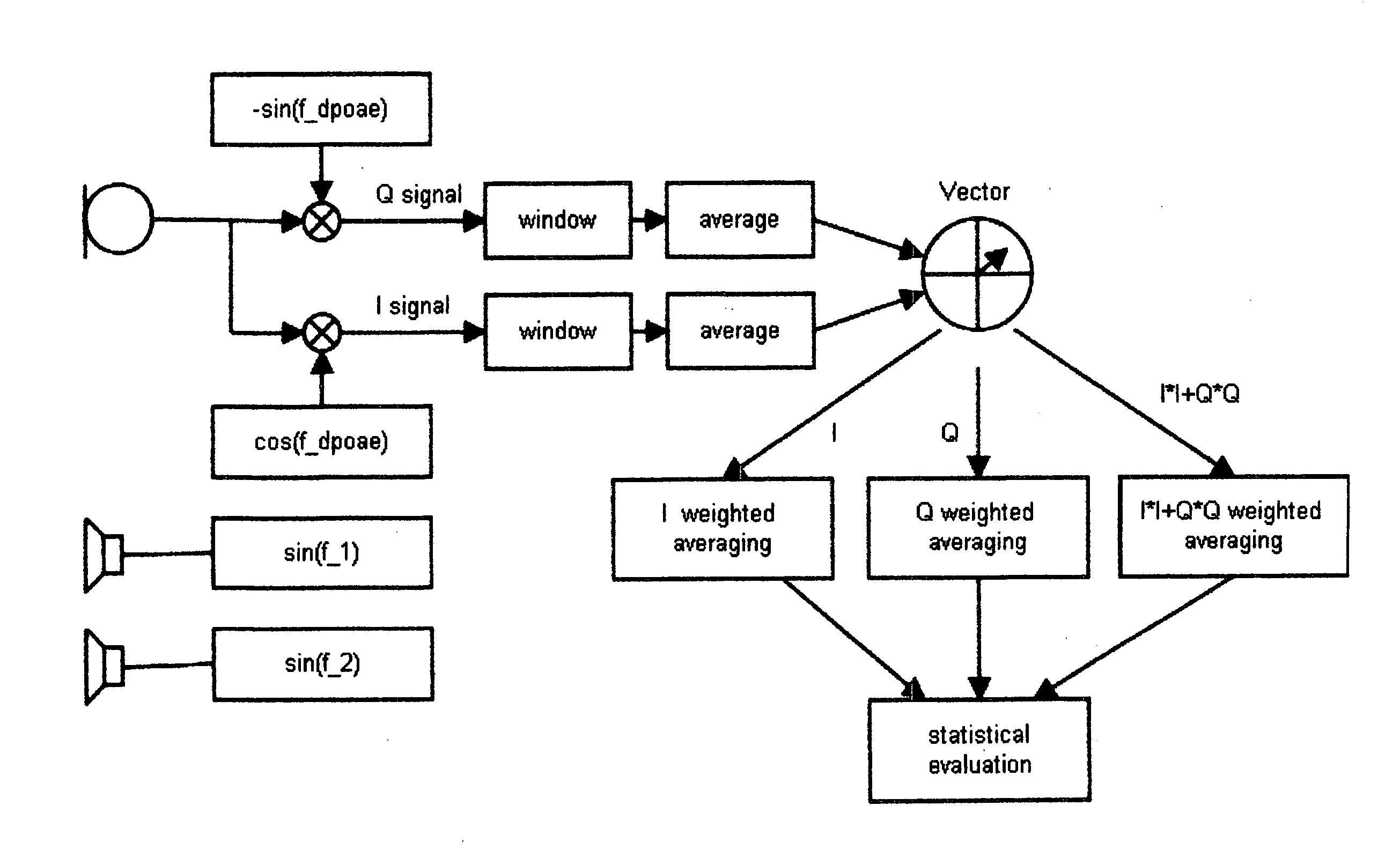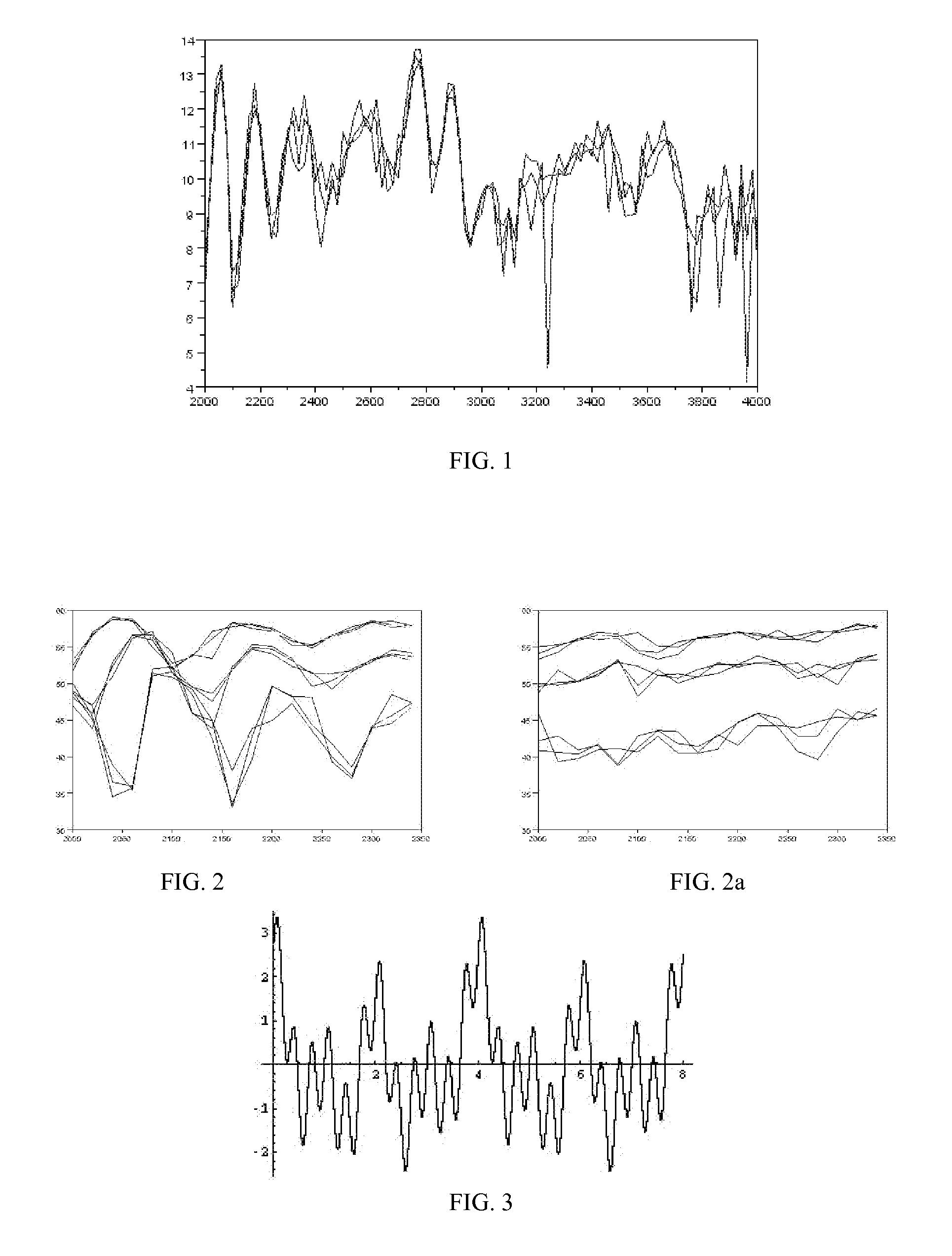Method and Apparatus for measuring Distortion Product Otoacoustic Emissions (DPOAE) by means of frequency modulated stimuli
a frequency modulated stimuli and otoacoustic emission technology, applied in the field of measuring distortion product otoacoustic emission (dpoae), acoustic signals, can solve the problems of fine structure of dpoae and interfere with the measurement of dpoae suppression
- Summary
- Abstract
- Description
- Claims
- Application Information
AI Technical Summary
Benefits of technology
Problems solved by technology
Method used
Image
Examples
Embodiment Construction
[0080]FIG. 1 is a graph of three recordings performed to prove the reproducibility of the fine structure.
[0081]FIG. 2 is a graph of a recording showing the standard recording techniques for 3 stimulus levels and 3 recordings per setting.
[0082]FIG. 2a is a graph of a recording showing FMDPOAE demonstrating the suppression of fine structure for 3 stimulus levels and 3 recordings per setting.
[0083]FIGS. 3 through 7 illustrate the FFT steps. FIG. 3 illustrates a graph of a periodic function, f(t).
[0084]FIG. 4 is a graph of the window function w(t).
[0085]FIG. 5 is a plot of both the window function, w(t) and function ƒ(t)
[0086]FIG. 6 is a plot of ƒ(t)*w(t).
[0087]FIG. 7 is a periodicized segment periodically extending the windowed function, ƒ(t)*w(t), all along the t-axis.
[0088]FIG. 8 is a schematic of the incoming signal sample per sample multiplied with sine and cosine of the known fDPOAE. The common method to detect DPOAE is framing the measurement raw data in frames of constant length...
PUM
 Login to View More
Login to View More Abstract
Description
Claims
Application Information
 Login to View More
Login to View More - R&D
- Intellectual Property
- Life Sciences
- Materials
- Tech Scout
- Unparalleled Data Quality
- Higher Quality Content
- 60% Fewer Hallucinations
Browse by: Latest US Patents, China's latest patents, Technical Efficacy Thesaurus, Application Domain, Technology Topic, Popular Technical Reports.
© 2025 PatSnap. All rights reserved.Legal|Privacy policy|Modern Slavery Act Transparency Statement|Sitemap|About US| Contact US: help@patsnap.com



